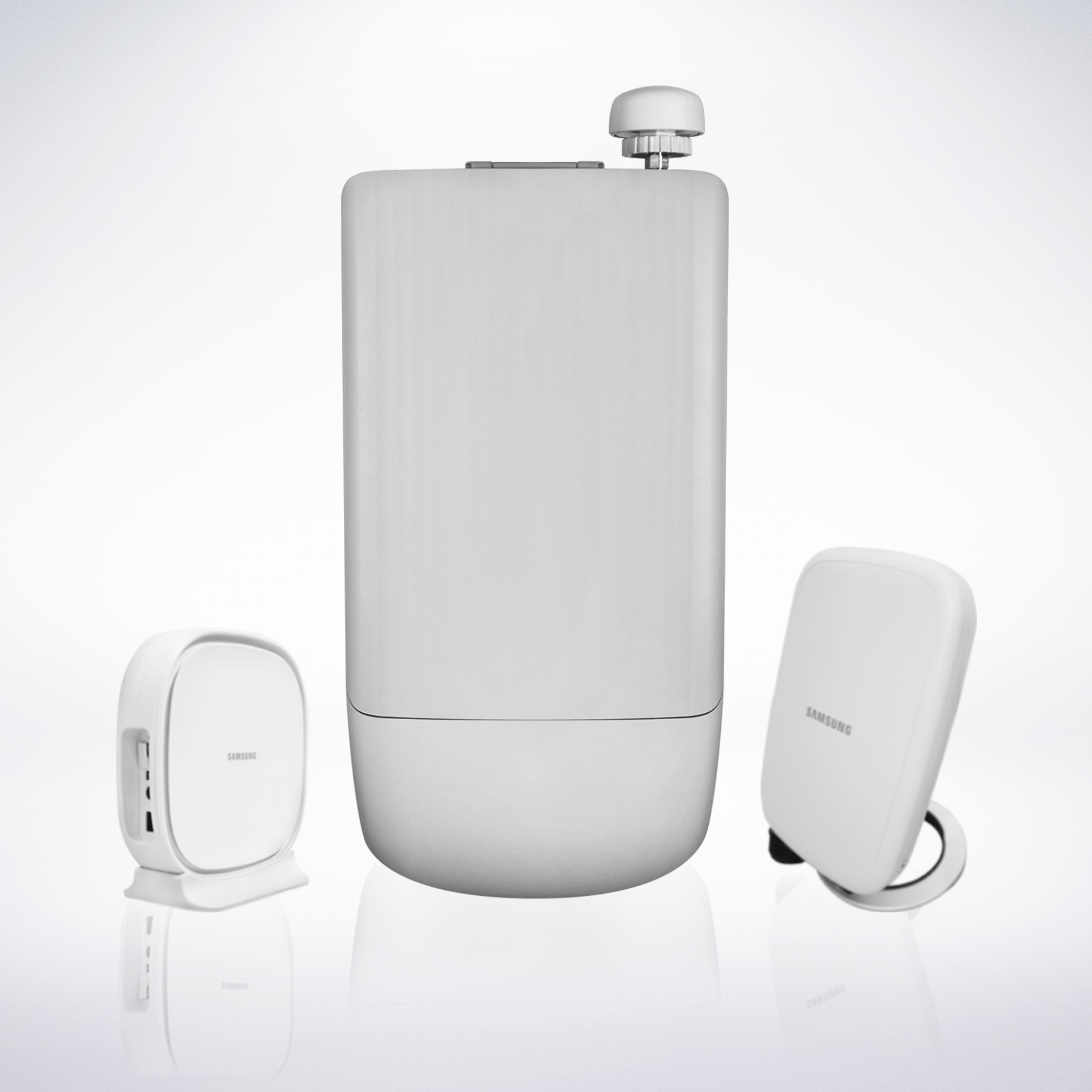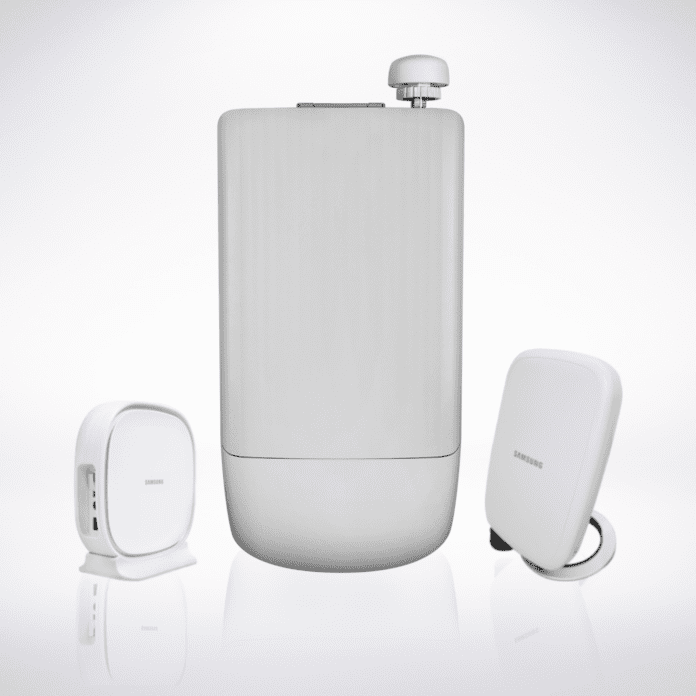Samsung earns distinction of designing first FCC approved end-to-end 5G beamforming basestations.
Last week, the U.S. Federal Communications Commission gave Samsung approval of the final piece of its triad of equipment for 5G fixed wireless. It was the first time the FCC had approved a commercial 5G millimeter wave (mmWave) beamforming product.
First announced in February at Mobile World Congress, Samsung’s commercial fixed wireless system consists of three devices: an access point and outdoor and indoor routers. The FCC approved the access point — which sits on a utility pole — and the outdoor router — for outside of buildings — in February. The FCC approved Samsung’s indoor router last week.
Because this was the first commercial beamforming application before the FCC, the Samsung worked closely with the FCC for many months insuring that they were are on the same page about beamforming: its impacts and implications for power, human exposure and other factors, said Alok Shah, Samsung’s VP of networks strategy, business development and marketing, told RCR Wireless News.
“They reached the point where they were comfortable,” said Shah. “It was learning process for all of us to determine what data would be required and how the measurements align with existing FCC regulations.”

Verizon will deploy the commercial product first in its Sacramento market. Sacramento was the trial location for one of Verizon’s 5G tests, using Samsung’s pre-commercial 5G FWA system. The results from trials were that a single 5G radio could reach 19th floor of a multi-dwelling unit, broadband worked in line of sight (LOS), partial LOS, and non-LOS connections, and weather did not interrupt the services. The trials did help with the FCC approval, and Samsung’s commercial product grew out of these tests.
The phase 2 trial equipment Verizon and Samsung used in Sacramento and elsewhere was a larger, cruder version of the commercial end-to-end product that the FCC approved. The trial equipment, since taken down, was also not as power efficient, said Shah.
One step at a time
In terms of FWA and the overall 5G standard, Shah said. “The initial standard is focused on enhanced mobile broadband. It is really focused on speed. I think what we will see as mobile 5G gets out there and starts to gain popularity is more applications that are centered around low-latency or even perhaps the massive IoT application use cases.”
He further explained that Samsung would focus on application development and use case development this year. “From 2012 to 2016 we were doing core R&D and demos, 2017 was focused on trials, and 2018 is really about commercial deployment and use case development,” he said.
Samsung wants to justify the 5G buildup through use cases to convince customers that money can be made into adopting 5G technology sooner rather than later.
“How do we work with the carriers, and work with consumers and enterprise customers to create business cases for some of these applications that justify the buildup,” said Shah. “There are going to be some interesting consumer use cases around AR and VR and things like that. There are going to be all kinds of interesting enterprise use cases around remote control of machines. We are going to see connected vehicles. We going to see all kinds of really interesting stuff. That is where our focus now: how to enable those use cases.”

